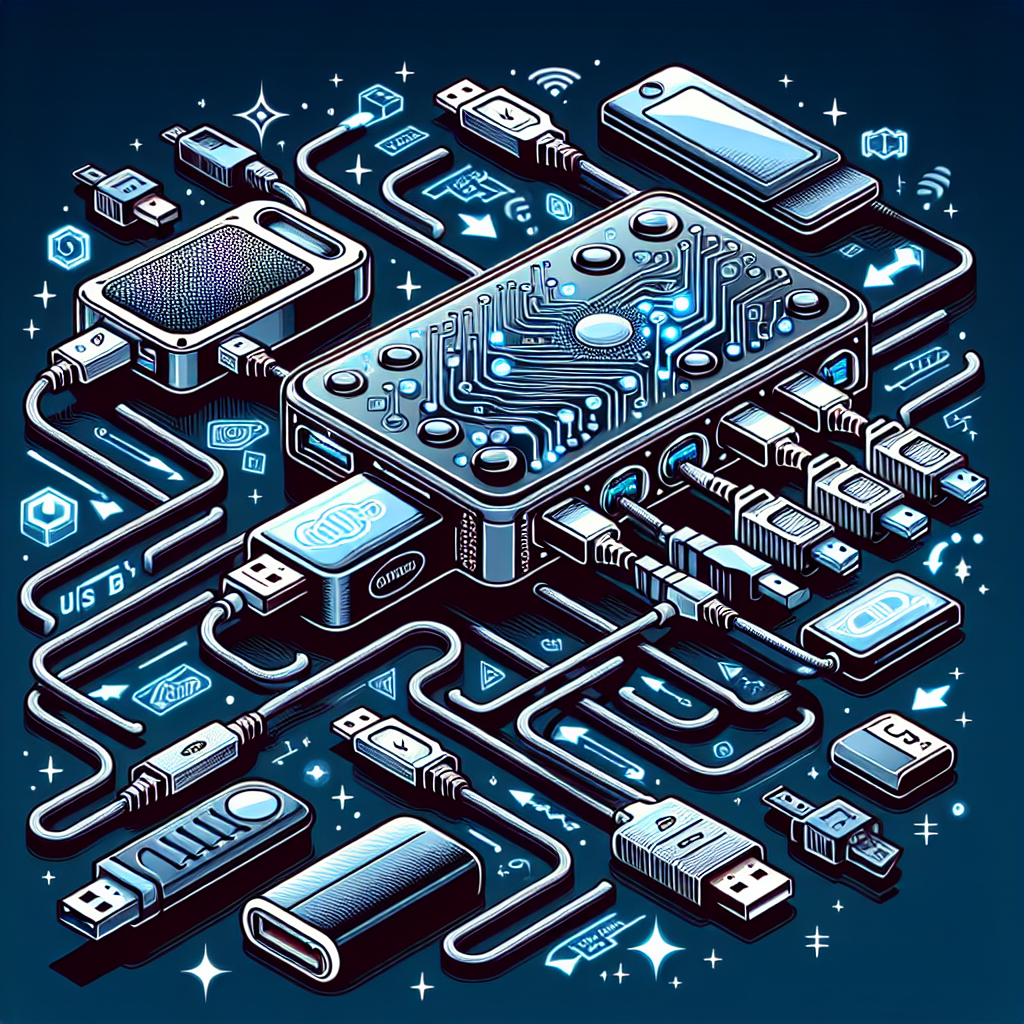Introduction
In today’s fast-paced digital world, data storage solutions have become essential for both personal and professional needs. External hard drives and flash drives are among the most popular devices for storing and transferring data. However, many users wonder if they can connect multiple devices, such as an external hard drive and a flash drive, to a USB splitter simultaneously. In this article, we will explore the functionality of USB splitters, their limitations, and tips for effective connectivity.
| Device Type | Typical Capacity | Typical Power Requirement | Data Transfer Speed |
|---|---|---|---|
| External Hard Drive | 500GB – 10TB | 5V, 900mA | USB 3.0: Up to 5 Gbps |
| Flash Drive | 2GB – 2TB | 5V, 200mA | USB 3.0: Up to 5 Gbps |
Understanding USB Splitters
A USB splitter, or USB hub, is a device that expands a single USB port into multiple ports, allowing multiple USB devices to connect to a single computer or power source. USB splitters come in various shapes and sizes, with some offering passive power support (drawing power from the computer’s USB port) and others including external power sources (active USB hubs).
Types of USB Splitters
- Passive USB Splitters: These hubs allow multiple devices to connect but do not supply additional power. They rely on the host device to provide adequate power for all connected devices.
- Active USB Splitters: These hubs have their own power supply, enabling them to supply more power than the host device can provide. This is essential when connecting power-hungry devices.
Can You Connect Both Devices Simultaneously?
Yes, you can connect an external hard drive and a flash drive to a USB splitter simultaneously, but various factors determine if this configuration will work effectively.
Important Considerations
Device Power Requirements
Every USB device has specific power requirements, and exceeding these can cause connectivity issues or device malfunctions. Most external hard drives require more power than flash drives:
- External Hard Drive: Around 900mA
- Flash Drive: Around 200mA
When you connect both devices through a passive splitter without enough power, the external hard drive may not function correctly, leading to data corruption or failure to connect.
USB Version
The version of USB used also impacts performance:
- USB 2.0: Maximum speed of 480 Mbps. It may not supply enough power and speed for an external hard drive and flash drive used simultaneously.
- USB 3.0: Maximum speed of 5 Gbps. It can provide better performance for multiple devices compared to USB 2.0.
Data Transfer Speeds
When connected through a USB splitter, the data transfer speeds may be influenced by the range of devices used:
- Only one device may receive full bandwidth when using low-quality splitters.
- Using high-quality splitters can help ensure both devices operate efficiently.
Best Practices for Connecting Devices
1. Choose an Active USB Splitter
Invest in an active USB splitter if you plan on using an external hard drive and flash drive at the same time. This ensures adequate power distribution to both devices.
2. Know Device Requirements
Check the power and bandwidth requirements of your devices. Some splitters list their maximum capacities; refer to these details for guidance.
3. Limit the Number of Devices
Consider limiting the number of devices connected to the splitter to avoid power issues. If you’re only using one external hard drive and one flash drive, compatibility increases significantly.
4. Avoid Using High-Power Devices Together
Avoid simultaneously connecting high-power devices (such as multiple external hard drives) on the same splitter. This increases the likelihood of power issues and device failure.
Troubleshooting Connection Issues
If you encounter problems connecting both devices, consider the following troubleshooting techniques:
1. Restart Your Devices
Sometimes, a simple restart can resolve connectivity issues. Disconnect and reconnect your devices to see if they function correctly.
2. Check the Splitter
Inspect the USB splitter for damage or compatibility issues. If possible, try a different splitter, preferably a known high-quality active splitter.
3. Update Drivers
Ensure that the drivers for your USB ports are up-to-date. Installing the latest driver can improve functionality and resolve connection problems.
4. Test Individual Connections
Test each device independently with the USB splitter to ensure each device works correctly. If one device fails, it may indicate a hardware problem.
Conclusion
Connecting an external hard drive and a flash drive to a USB splitter simultaneously is possible, but you must consider factors such as power requirements and device compatibility. Following best practices, utilizing active splitters, and troubleshooting connection issues will help ensure a smooth experience. Always remember that not all USB splitters are created equal; the quality of your splitter will significantly impact device performance. Proper planning and care in selection will help you make the most of your USB connections!

